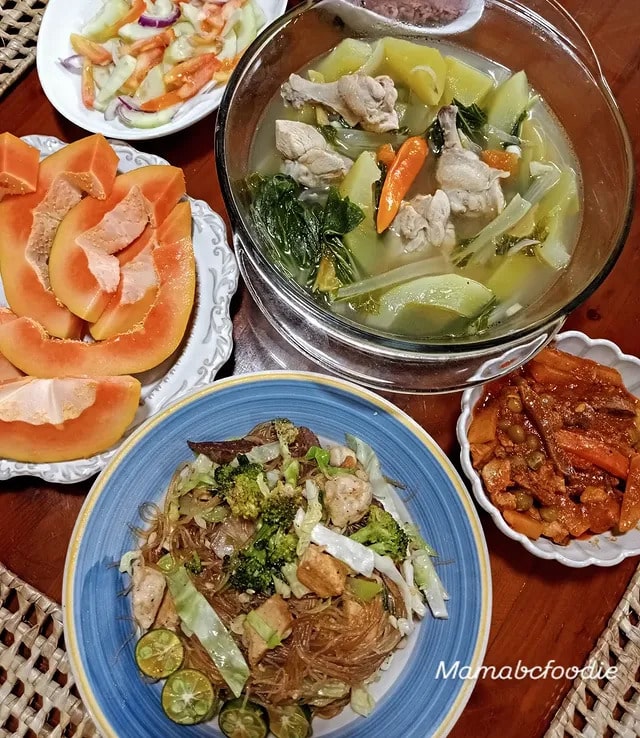Filipino cuisine“is like the sleeping beauty of Asia.”
– Gordon Ramsay
When people think of Filipino cuisine, the first images that pop up are usually lechon glistening with crackling skin, adobo simmered in soy and vinegar, or maybe halo-halo piled high with shaved ice, beans, and ice cream.
Bold, hearty, indulgent – that reputation isn’t wrong. But here’s the twist: Filipino food also has a lighter, more nutritious side that deserves a spotlight.
In everyday kitchens across the Philippines, families cook dishes that are nutrient-fueled, balanced, and surprisingly wholesome (in other words- Nutrient-Fueled Filipino Dishes!) These aren’t “diet foods” or trendy detox meals – they’re authentic Filipino recipes built on vegetables, broth, legumes, and fresh herbs.
They’re the meals your “lola” served you when you were sick, or the dishes families lean on when payday feels far away but nutrition still matters.
In this article, we’ll talk about three classics that prove Filipino food can be both comforting and nutrient-rich:
- Chicken Tinola (Chicken Moringa Soup)
- Laing with Shrimp and Pork (Taro Leaves in Coconut Milk)
- Ginisang Monggo (Mung Bean Stew)
If you think Filipino food is just about fried lumpia and sizzling sisig, get ready for a new perspective.
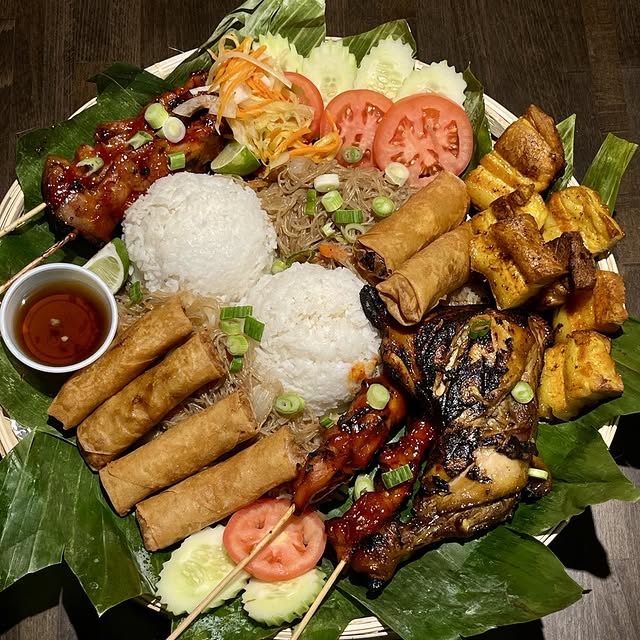
Why Filipino Food Deserves a Spot on the Healthy Table
Let’s get one thing straight: Filipino food is not just fried pork and sugar-laden desserts. Yes, those exist (and they’re delicious), but they’re occasional treats, not daily staples.
If you peek into a typical Filipino kitchen on a weekday, you’ll likely find broths, leafy greens, root crops, fish, and legumes simmering away.
Traditional Filipino cooking is plant-rich and resourceful. Moringa (malunggay) grows in backyard gardens. Taro leaves are picked fresh. Tomatoes, onions, and garlic form the backbone of most dishes.
And when meat is used, it’s often stretched with vegetables, beans, or grains to feed a whole family.
There’s a misconception that Filipino food is always oily, heavy, or unhealthy. That’s mostly because fiesta dishes – lechon, crispy pata, chicharrón – get all the press. But in reality, Filipino food at home strikes a beautiful balance between comfort and nutrition.
Dishes like tinola, laing, and monggo aren’t side acts; they’re staples that quietly fuel generations.
If you want meals that are nutrient-packed, affordable, and soul-satisfying, Filipino cuisine deserves a prime spot at your healthy table.
Let’s dig in!
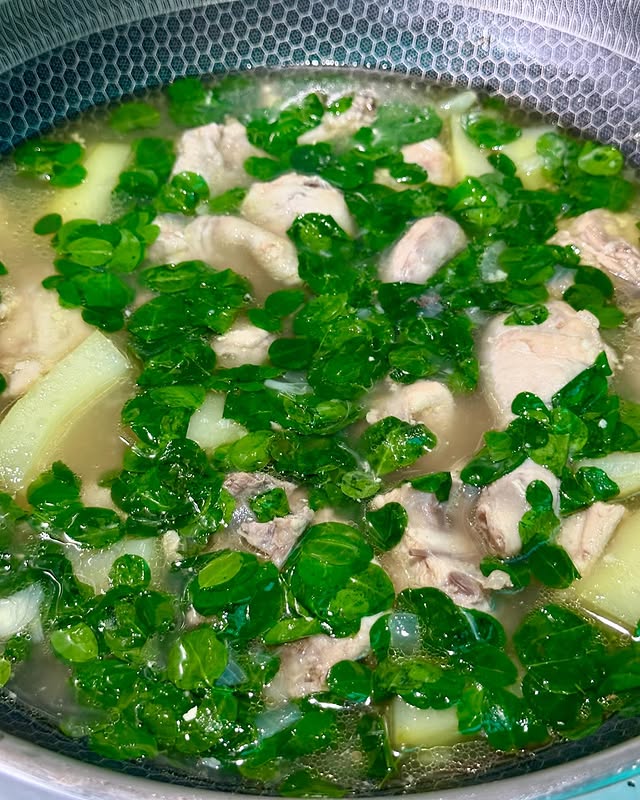
Dish #1: Chicken Tinola (Chicken Moringa Soup)
If Filipino food had a chicken noodle soup equivalent, it would be chicken tinola. This classic dish is the go-to for people recovering from illness, rainy day comfort, or just when you need something light but filling. This is why it is first on our list of Nutrient-Fueled Filipino Dishes.
Ask any Filipino why they serve tinola to the sick, and you’ll hear the same answer: “It heals you.”
Key Ingredients & Nutrition
- Chicken – A lean protein source that’s easy on the stomach and keeps you full.
- Moringa (malunggay) – The star ingredient. Known as a “superfood,” moringa is loaded with vitamins A and C, calcium, iron, and antioxidants. It supports blood sugar balance, cholesterol control, liver protection, and digestion. Basically, it’s nature’s multivitamin.
- Ginger – Anti-inflammatory and aromatic, giving the broth that warming kick.
- Onion & garlic – Immunity boosters that support heart health and digestion.
- Green papaya or chayote – Mild veggies that add fiber, support healthy digestion, and keep the broth balanced.
Flavor Profile
Tinola is clean, aromatic, and restorative. The broth has a gingery zing balanced by the sweetness of papaya or chayote. The moringa leaves bring a subtle green freshness that rounds it all out.
Health Angle
This dish is the definition of immune-boosting comfort food. It’s light enough for dinner but filling enough to sustain you. Perfect for those moments when you want food that feels like a warm hug – but also secretly delivers half your vitamin needs.
Growing up, tinola was always the dish my grandmother made when someone sneezed too loudly. Forget medicine – one bowl of tinola and a nap, and you were magically cured. Was it science? Was it love? Honestly, both.
I highly recommend people to drink moringa soup/tea daily. It just blasts your body with health nutrients you never knew you needed.
Here’s a very simple ingredient for it:
- Moringa leaves (about half a fist full)
- 4 cups of water (32 oz)
- Ginger
- Minced garlic
- Chopped onions
- Salt (half teaspoon or lesser)
- Ajinomoto Vetsin seasoning (⅛ teaspoon)
How to cook:
- Preheat the water on a stovetop and bring to boil
- Add the garlic and chopped onions once the water boils
- Simmer for 2-3 minutes and then add the salt and seasoning
- Allow to simmer for another minute, then serve warm
Pro tip: Don’t just drink the tea, eat the leaves too – that’s where all the nutrients come from.
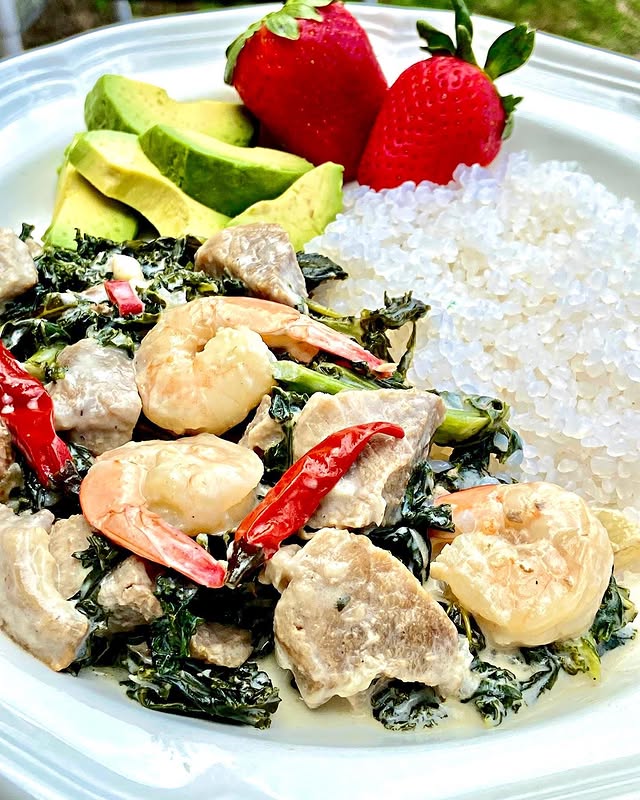
Dish #2: Laing with Shrimp and Pork (Taro Leaves in Coconut Milk)
If chicken tinola is the nurse, laing is the daredevil. Originating from Bicol, the land of spice and coconut, laing is a dish of taro leaves simmered in coconut milk, chili, and shrimp paste, often with shrimp or pork added for richness.
It’s fiery, creamy, and unforgettable.
Key Ingredients & Nutrition
- Taro leaves – Packed with fiber, vitamins A and C, and iron. They support digestion, immunity, and energy.
- Coconut milk – A source of healthy fats that provide energy and help absorb nutrients.
- Chilies – Metabolism boosters that also improve circulation.
- Shrimp – Great for heart and brain health, immune support, and weight management.
- Pork – Provides high-quality protein plus vitamins B6, B12, and minerals like zinc and selenium for energy and immunity.
Flavor Profile
Laing is creamy, spicy, and savory, with layers of umami from shrimp paste or fish sauce. The taro leaves soak up coconut milk and spice like a sponge, giving you forkfuls of earthy richness.
Health Angle
Laing is surprisingly nutrient-dense and versatile. Go vegetarian and it’s plant-based. Keep the shrimp and pork, and it’s protein-packed. Either way, you’re getting vitamins, fiber, and healthy fats in every bite.
Bicolanos don’t just “like” chili – they treat spice like a religion. When I first tried laing in Naga, the host asked, “Mild or normal?” I confidently said “normal.” Ten minutes later, I was sweating like I’d run a marathon. But here’s the thing: I couldn’t stop eating. That’s laing – painfully good, in the best way.
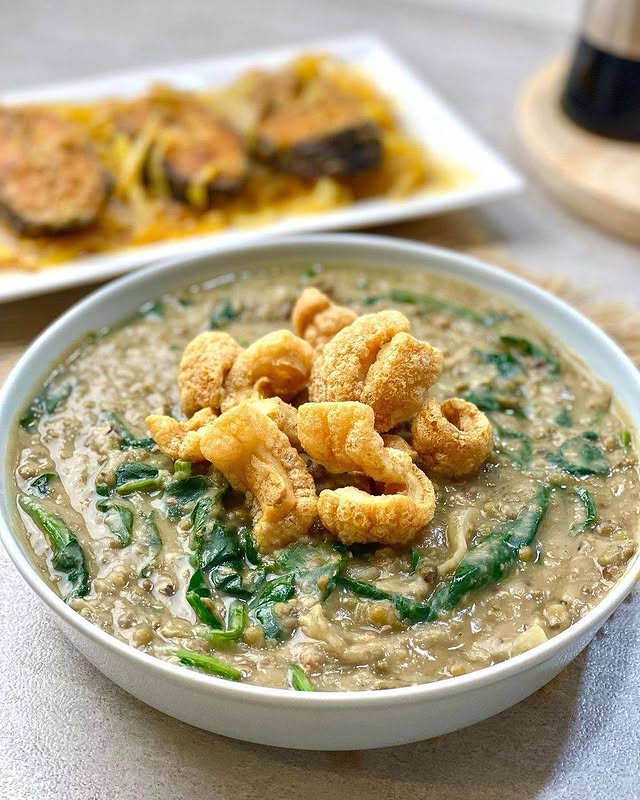
Dish #3: Ginisang Monggo (Mung Bean Stew with Fish, Shrimp, or Pork)
Now let’s talk about the humble hero: ginisang monggo. This mung bean stew is often cooked on Fridays (an old Catholic tradition) and has quietly become one of the most nutritious and budget-friendly Filipino dishes. Here are the key ingredients of the final dish on our list of Nutrient-Fueled Filipino Dishes:
Key Ingredients & Nutrition
- Mung beans – A nutritional powerhouse: protein, fiber, folate, magnesium, and antioxidants. They’re affordable but rival meat in nutrition.
- Garlic, onions, tomatoes – The holy trinity of Filipino flavor, plus immune-boosting antioxidants.
- Leafy greens – Malunggay (moringa – see how Filipinos value this plant a lot?) or ampalaya leaves add freshness and vitamins.
- Optional fish, shrimp, or pork – Boosts protein content and makes it heartier.
Flavor Profile
Monggo is earthy, hearty, and slightly nutty. It’s not as flashy as adobo or sinigang, but it delivers that comforting “home-cooked” feeling that keeps you coming back.
Health Angle
This dish is the definition of affordable nutrition. It’s filling, protein-rich, and great for meal prep. If you’re on a budget but want food that checks every nutritional box, monggo has your back.
For me, monggo was always a Friday ritual. We didn’t realize it then, but it was basically the perfect balanced meal – protein, fiber, greens, and flavor – all in one pot. What looked like “simple food” was really a nutritional goldmine in disguise.
How to Incorporate These Dishes into Everyday Eating
The beauty of these nutrient-fueled Filipino dishes is how seamlessly they fit into modern health goals:
- Chicken Tinola – Great for light dinners or when you’re under the weather.
- Laing – Pair with brown rice or quinoa for a fiber-rich, protein-packed meal.
- Ginisang Monggo – Batch-cook on Sunday and enjoy it throughout the week for budget-friendly meal prep.
Together, these dishes give you a weekly rotation that covers lean protein, healthy fats, fiber, and antioxidants. They’re proof that Filipino food isn’t just indulgent – it’s a balance of comfort and wellness.
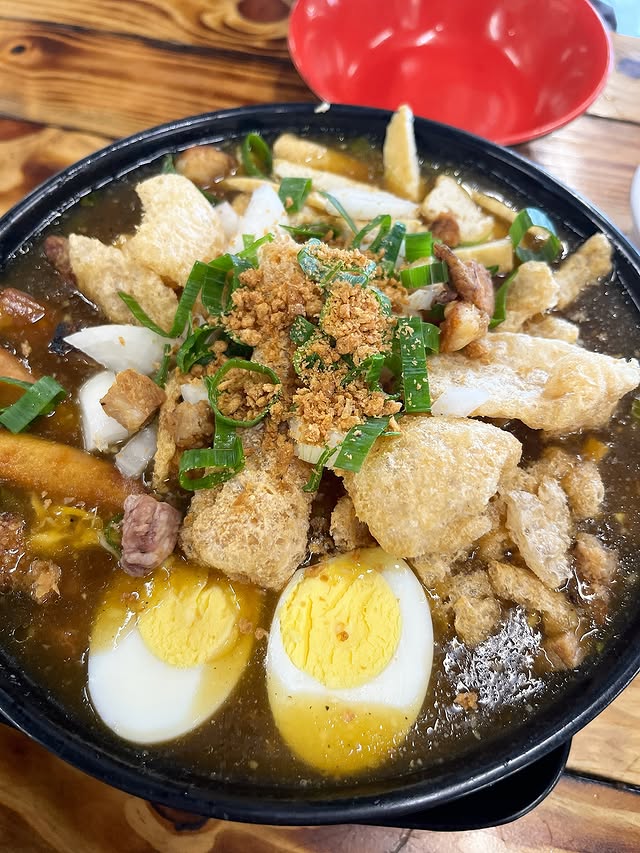
A Good Find in a Tiny Humble Country in South East Asia
Filipino cuisine doesn’t have to be just about crispy pork or sweet desserts. At its heart, it’s practical, nourishing, and deeply tied to wellness.
From the gingery broth of chicken tinola, to the spicy creaminess of laing, to the protein-packed heartiness of ginisang monggo, these dishes show us that nutrient-fueled Filipino food is already here – it just needs a little more attention.
Thank the bathalas (gods) for teaching our ancestors to mix and match delicious meats with nutrient-rich veggies and spices. They make every meal overflowing with umami that you’d never even notice how healthy they are!
And that’s the goal – enticing people to eat healthy food.
Cooking them at home means more than eating well. It’s about connecting with tradition, feeding your body, and enjoying the comfort of flavors passed down through generations.
Because food isn’t just fuel. Food can be healing, cultural, and comforting – all in one bowl.
Featured image credit: @mamabcfoodie

